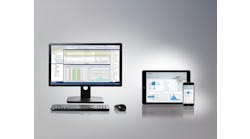IIoT works overtime
The Industrial Internet of Things is surpassing itself with added data sources, more detailed information and greater insights—if users are open-minded and flexible enough to try it. Read more of this series here.
As its name suggests, the Industrial Internet of Things (IIoT) uses wired or wireless Ethernet and other networks to reach, interact or overlap every corner of the process industries from the most remote field and production devices to the top of the IT and business levels. The devices IIoT can access are infinitely varied, but there are some common elements that can help users develop useful versions of their own:
- Smart sensors, instruments, analyzers, I/O and other plant-level devices that gain their intelligence and communications from onboard microprocessors and webpages, Ethernet ports and protocols, Internet protocol (IP) and other web-based addresses;
- Hardwired, fiber-optic, wireless, Ethernet or a combination of network cabling, connectors and support devices;
- Communication protocols, such as Ethernet TCP/IP, Ethernet Advanced Physical Layer (APL), OPC UA, HART, MQTT or fieldbuses, such as EtherNet/IP, Profibus or Profinet, Foundation Fieldbus HSE, Modbus or Modbus TCP, and others;
- Electricity for IIoT typically delivered as 24 V current or from long-life batteries, local solar or other energy-gathering methods;
- Audit and accounting of all production components, software, processes, systems and support equipment;
- Inventory of IIoT system and network monitoring tools and production-related, heath- evaluation software;
- Cybersecurity software and hardware, including managed Ethernet switches used as firewalls, and network traffic evaluation and anomaly detection software; and
- Virtualized data processing on servers, and cloud-computing services for data analytics.
About the author: Jim Montague






